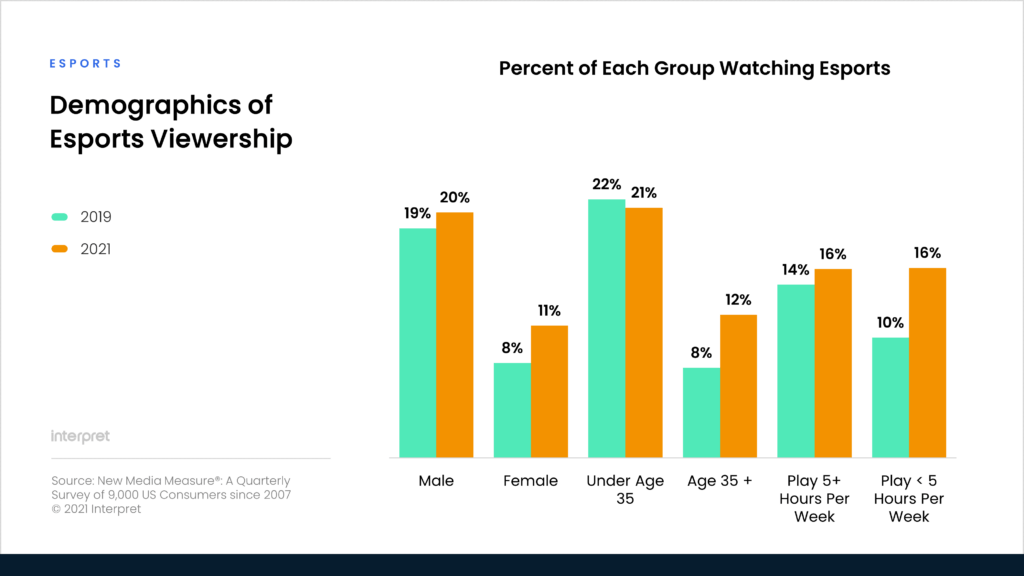While many have pointed to gaming and esports as key beneficiaries of the pandemic entertainment boom, it hasn’t been all rainbows and sunshine for the esports industry, as shifts to online competition and lost revenues hurt numerous organizations. The good news, according to Interpret’s Esports Replay™, is that overall viewership of esports in the US market is up after a down year for the industry that produced financial pressure on all parts of the ecosystem.
As of mid-2021, 15.7% of all US consumers reported having watched esports in the past three months. By comparison, that figure was 13.5% in 2019 and 12.4% in 2020. Moreover, what we’re seeing is that growth in viewership isn’t coming from the stereotypical “gamer” demographic, but instead is being driven by women, people over age 35, and light gamers who play fewer than five hours per week. A notably greater percentage of women (+3.1%), older consumers (+4.4%), and light gamers (+5.8%) claim to have watched esports in the past quarter compared with mid-2019.
This is good news for the esports sector, as it means efforts to reach new audiences and a wider demographic appear to be working. A few trends could be contributing to this shift; the rise of non-traditional esports games such as chess, initiatives around all-female esport teams and other aspects of inclusion, and greater discretionary time for consumers to explore livestreams could all be producing greater traction among these consumer groups.
A broader audience will ultimately mean greater revenue potential for esports organizations as an expanded audience leads to expanded viewership for streamers and tournaments. Improvements in consumer viewership across new demographics allows teams, leagues, and tournament organizers to draw a broader set of potential sponsors, and potentially greater investment from existing sponsors eager to reach new audiences.







